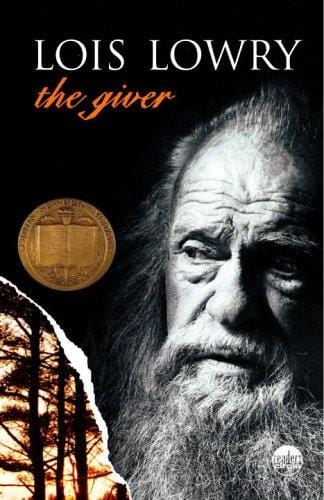Exploring “The Giver”: Summary, Themes, and Lasting Impact
Lois Lowry’s The Giver explores memory, choice, and conformity in a seemingly utopian society, challenging readers to value freedom and emotional depth.

Introduction to Lois Lowry’s Visionary Novel
Since its publication in 1993, Lois Lowry’s award-winning novel The Giver has stood as a landmark work in young adult dystopian fiction. Set in an apparently utopian community free of war, pain, and inequality, the story follows 12-year-old Jonas as he uncovers the dark compromises that underpin his society’s calm surface. More than three decades later, the book continues to ignite classroom debates, inspire film adaptations, and top banned-book lists, proving its enduring power to challenge readers of all ages.
World-Building: A “Perfect” Community With Hidden Costs
Lowry crafts a meticulously ordered world where climate is controlled, jobs are assigned, and even family units are carefully matched by the Committee of Elders. Citizens obey strict rules, greet one another with formulaic phrases, and take daily medication to suppress strong emotions. At first glance, this engineered serenity seems idyllic, but its price becomes clear as Jonas learns what his neighbors have sacrificed for sameness: authentic emotion, personal freedom, and the richness of memory.
Plot Overview: Jonas’s Journey From Innocence to Insight
The narrative begins during the annual Ceremony of Twelve, where children are given their lifelong vocational roles. While his peers receive straightforward assignments—Caretaker, Instructor, Laborer—Jonas is singled out to become the community’s next Receiver of Memory. Under the tutelage of the current Receiver, now called the Giver, Jonas absorbs memories of love, color, music, snow, and also of war, hunger, and death. These vivid experiences awaken him to possibilities beyond his monochrome existence. When Jonas discovers the shocking truth behind “release,” the community’s euphemism for euthanasia, he resolves to flee, hoping his departure will return stolen memories—and true humanity—to the people he loves.
Key Characters and Their Roles
Jonas
As the protagonist, Jonas embodies curiosity and moral courage. His gift of “Capacity to See Beyond” allows him to perceive color first, then deeper truths, making him a natural reformer in a society that fears change.
The Giver
A weary but compassionate elder, the Giver carries the community’s collective memories. His mentorship of Jonas highlights the tension between protecting society from pain and honoring the full spectrum of human experience.
Father and Mother
Jonas’s parents represent well-intentioned citizens blind to their own complicity. His father, a Nurturer, performs releases without grasping their moral weight, illustrating how conformity dulls empathy.
Asher and Fiona
Jonas’s friends underscore what is lost when individuality is suppressed. Asher’s playful nature is curbed by constant discipline, while Fiona’s gentle spirit is channeled into an assigned career, both illustrating the cost of uniformity.
Major Themes That Resonate Today
Memory as the Foundation of Identity
Lowry posits that memory—both joyful and painful—forms the backbone of personal and collective identity. Without a past, citizens cannot make informed choices for the future. The book urges readers to value historical knowledge and personal stories, warning that sanitized ignorance breeds vulnerability.
Freedom vs. Security
By eliminating choice, the Elders promise safety. Yet the novel makes clear that genuine security cannot exist without the risk inherent in freedom. Jonas’s awakening demonstrates that a life devoid of danger may also lack meaning.
The Necessity of Emotion
From parental love to grief, emotions are portrayed as essential to humanity. The community’s pills blunt desire and anger but also erase passion, creativity, and solidarity. Lowry suggests that embracing a full emotional spectrum, although painful, is crucial for empathy and growth.
Ethics of Conformity
The story interrogates the moral cost of enforced sameness. Uniformity may reduce conflict, yet it also stifles individuality and suppresses dissent. In an era of algorithmic echo chambers, this message rings louder than ever.
Why “The Giver” Still Matters in 2024
Digital surveillance, data-driven decision-making, and social media algorithms echo the novel’s controlled environment. Readers recognize modern parallels in the collection of personal information and the curating of online experiences. By grappling with issues of privacy and autonomy, The Giver equips new generations to question authority and defend personal freedoms.
Furthermore, the book’s approachable language makes philosophical discussion accessible to younger audiences. Topics such as euthanasia, state power, and civil disobedience become less abstract when filtered through Jonas’s emotional lens, fostering critical thinking across age groups.
Influence on Young Adult Literature
Preceding blockbusters like The Hunger Games and Divergent, Lowry’s work paved the way for a surge of dystopian sagas centered on teen protagonists challenging systemic injustice. Its emphasis on moral ambiguity and minimalist world-building demonstrated that young adult novels could tackle weighty issues without patronizing their audience.
In addition, the text’s ambiguous ending—Jonas and baby Gabriel sledding toward lights that might signal either hope or hallucination—has inspired countless classroom essays and fan theories. By refusing to supply easy answers, Lowry invites readers to imagine their own conclusions and, by extension, to shape their own realities.
Common Questions About “The Giver”
Is the community truly a dystopia?
While daily life appears peaceful, the absence of autonomy and the practice of euthanasia mark the society as dystopian. The novel challenges the reader to look beyond surface stability.
Why is the book frequently challenged or banned?
Some parents and educators object to its depiction of euthanasia, mild violence, and questioning of authority. Ironically, such censorship echoes the novel’s warnings about suppressing difficult ideas.
What do the colors symbolize?
Color represents choice, emotion, and diversity. Jonas’s ability to see red first underscores the awakening of passion and individuality that fuels his rebellion.
Conclusion: A Call to Remember and Choose
The Giver endures because it asks timeless questions: What are we willing to surrender for comfort? Who benefits when choices are removed? And how do memories shape our sense of self? By compelling readers to confront these dilemmas, Lois Lowry’s novel transcends genre, age bracket, and decade, remaining a vital text for anyone committed to preserving humanity in all its vivid, messy glory.



